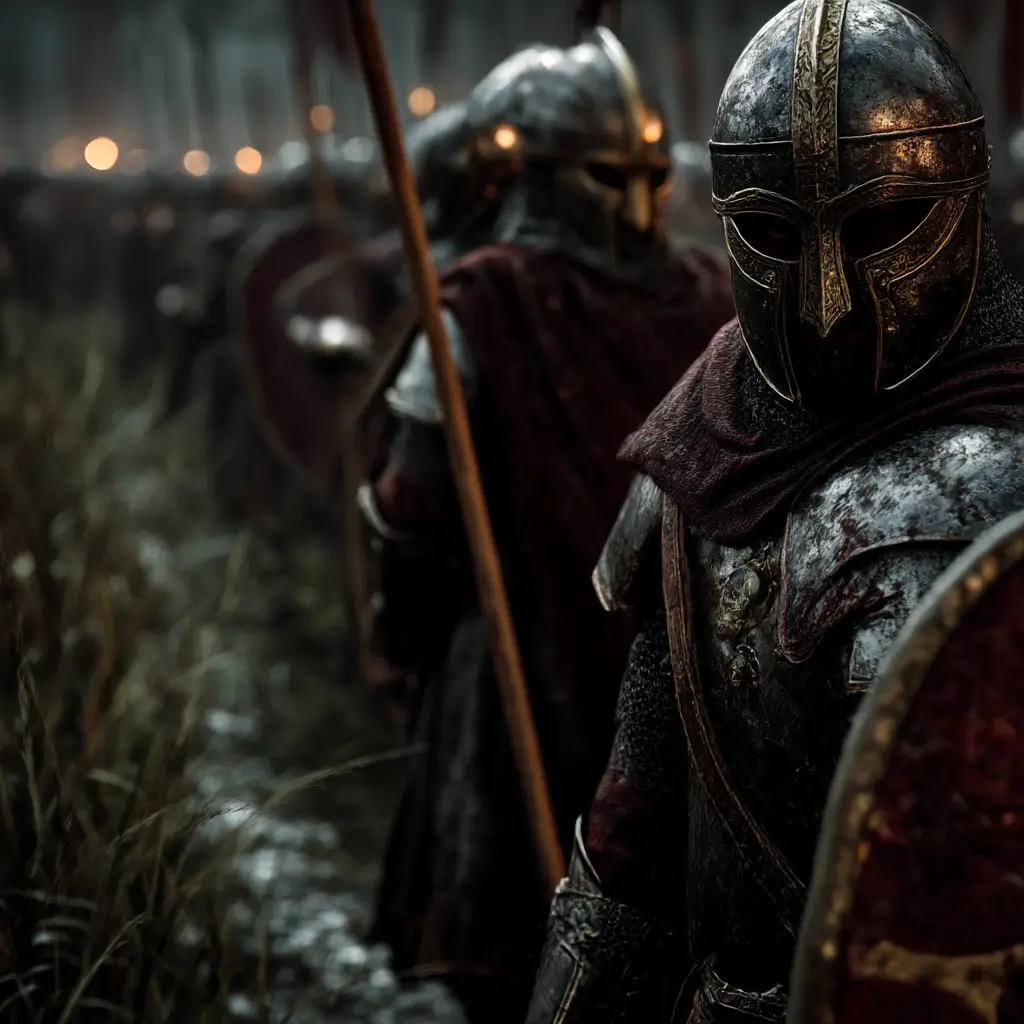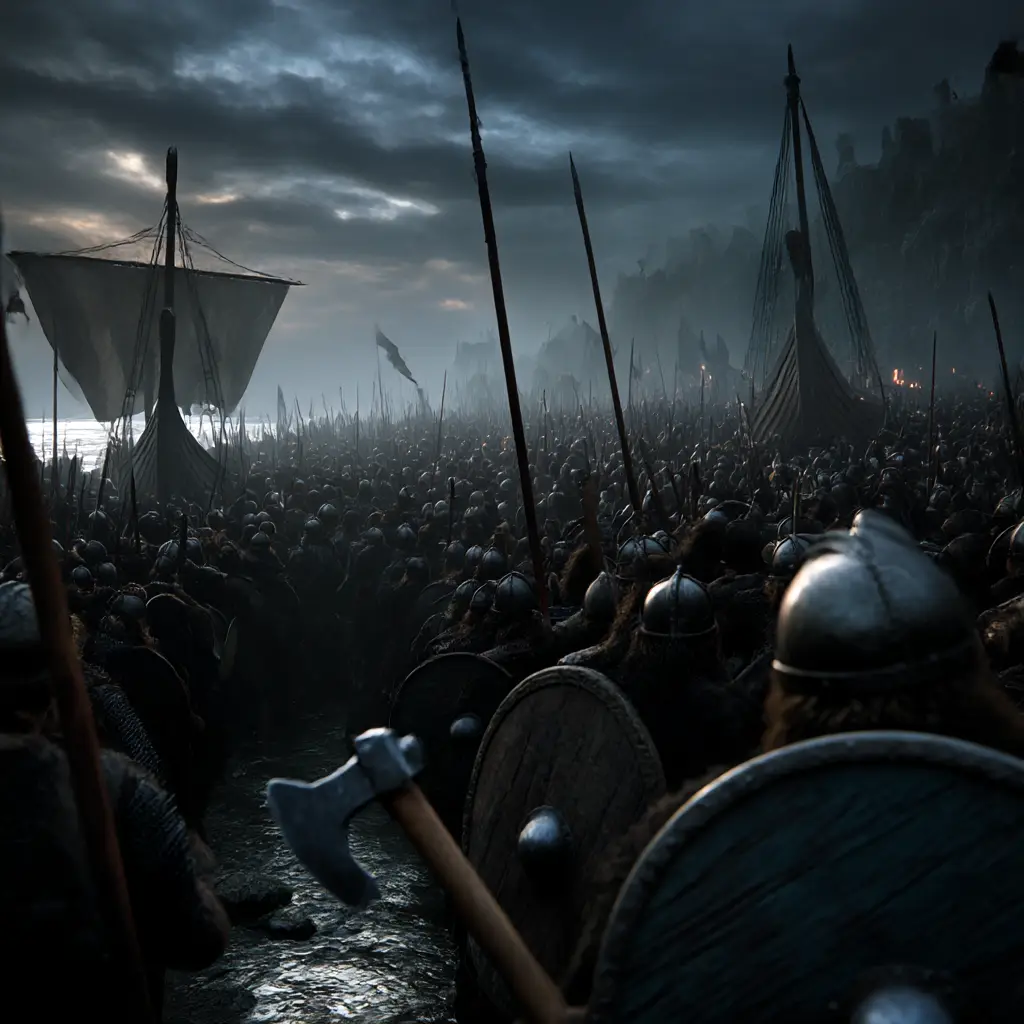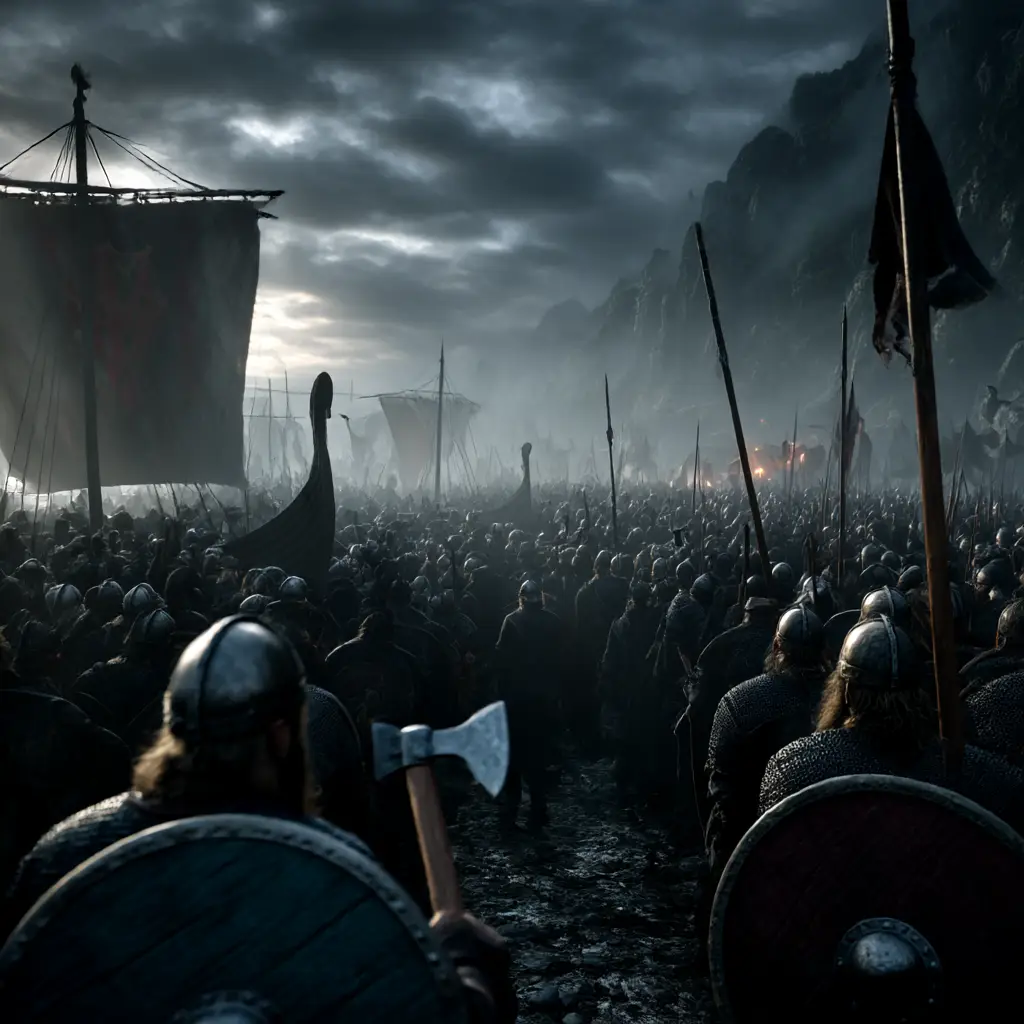The Great Viking Army, often referred to as the Great Heathen Army, was a large coalition of Norse warriors that invaded England in 865 AD. This army played a pivotal role in the Viking Age, significantly influencing the history of England and the wider Viking world. Below is a detailed breakdown of the army’s origins, campaign, and impact.
Origins and Formation of the Great Viking Army
The formation of the Great Viking Army is traditionally traced to the year 865 AD. It was led by several prominent Norse leaders, most notably Ivar the Boneless, Ubba, Björn Ironside, and Hastings, sons of the legendary Viking king Ragnar Lothbrok.
- Ragnar Lothbrok, a famed warrior and king, had previously raided England and Francia, and his death, as well as the political instability in Scandinavia, served as a catalyst for his sons to gather an army and seek revenge against those they believed had wronged their father.
- The army, a mix of warriors, traders, and settlers, was formed from the Norse kingdoms of Denmark, Norway, and Sweden, with a purpose not just of plundering but of establishing long-term control in foreign lands.
Invasion of England
The Great Viking Army landed in East Anglia (modern-day England) in 865 AD, where it began a series of systematic invasions. Their military campaigns were notable for their organization, brutality, and long-term strategy.
Key Phases of the Invasion:
- 865-871: Initial Raids and the Battle of Ashdown
- The Vikings first targeted Northumbria, raiding its territories. They made significant gains in the kingdom of East Anglia before moving southward. In 871, the Viking army faced off with the Anglo-Saxon forces of King Æthelred of Wessex and his brother Alfred in the Battle of Ashdown, a major confrontation that marked the beginning of Alfred the Great’s fight for control of Wessex.
- 871-878: The Wars of Wessex
- After several years of brutal conflict, including the loss of King Æthelred, the Viking army was able to control large portions of Anglo-Saxon England, including East Anglia and parts of Mercia. The Vikings went on to demand tribute from the Anglo-Saxons, an act that would continue until the rise of Alfred the Great.
- 878-886: Alfred the Great’s Resistance and the Treaty of Wedmore
- Alfred’s forces mounted a successful resistance, culminating in the decisive Battle of Edington in 878, where the Vikings were forced to retreat. This battle laid the groundwork for the Treaty of Wedmore, a pact between Alfred and the Viking chieftain Guthrum, which established the Danelaw in northern and eastern England, a territory under Viking control.
The Danelaw and Its Legacy
After the Treaty of Wedmore, the Vikings in England settled into a period of relative peace and prosperity. The Danelaw was established as a region of Viking influence, where Viking laws, culture, and language blended with the Anglo-Saxon traditions. This era saw the construction of Viking towns, the introduction of Viking coins, and the flourishing of trade routes between Scandinavia and England.
- Viking Settlements: Towns such as York, Jorvik, and Dublin became major centres of commerce and power. These towns became melting pots of Scandinavian and Anglo-Saxon cultures, playing a significant role in shaping the development of medieval England.
- Viking Laws and Language: The Vikings introduced their own legal system, which influenced English law, particularly in areas like property rights and trade. Many place names and words in modern English derive from the Old Norse language, a testament to the lasting impact of the Vikings on the region.
Decline of the Great Viking Army
The Great Viking Army gradually lost its unified strength after the establishment of the Danelaw and the subsequent consolidation of power by Anglo-Saxon kings like Alfred the Great and his successors.
- Internal Struggles: The leadership of the Viking army fractured as the sons of Ragnar, including Ivar the Boneless, Ubba, and Björn Ironside, each sought control of different territories. Their internal divisions weakened their ability to sustain a unified front.
- The Rise of Wessex: Under the leadership of Alfred and his heirs, Wessex rebounded, defeating Viking forces and reasserting control over southern England. The Vikings’ military strength began to wane as their focus shifted from conquest to settlement.
The Legacy of the Great Viking Army
The Great Viking Army’s campaigns in England had a profound impact on the course of English history:
- Cultural Integration: The Viking presence in England left a permanent mark on English society, contributing to its language, culture, and legal systems. The Viking Age also fostered connections between the Scandinavian world and the Anglo-Saxon kingdoms that would influence medieval Europe.
- Political Transformation: The creation of the Danelaw and the subsequent rise of English unity set the stage for the eventual formation of England as a unified kingdom. The Viking invasions brought England closer together politically, eventually leading to the consolidation of power under the Anglo-Saxon kings.
- Historical Interest: Today, the legacy of the Great Viking Army is celebrated in museums, historical sites, and through cultural revivals, with many of the original burial sites and Viking towns, like Jorvik, remaining important archaeological locations.
Conclusion
The Great Viking Army remains one of the most significant military forces in European history, its campaigns reshaping the political and cultural landscape of England. Their legacy, far beyond mere conquest, helped lay the foundations for the modern nation of England and influenced the course of European history during the Middle Ages. Through their wars, settlements, and integration into local culture, the Vikings left an indelible mark that endures to this day.



